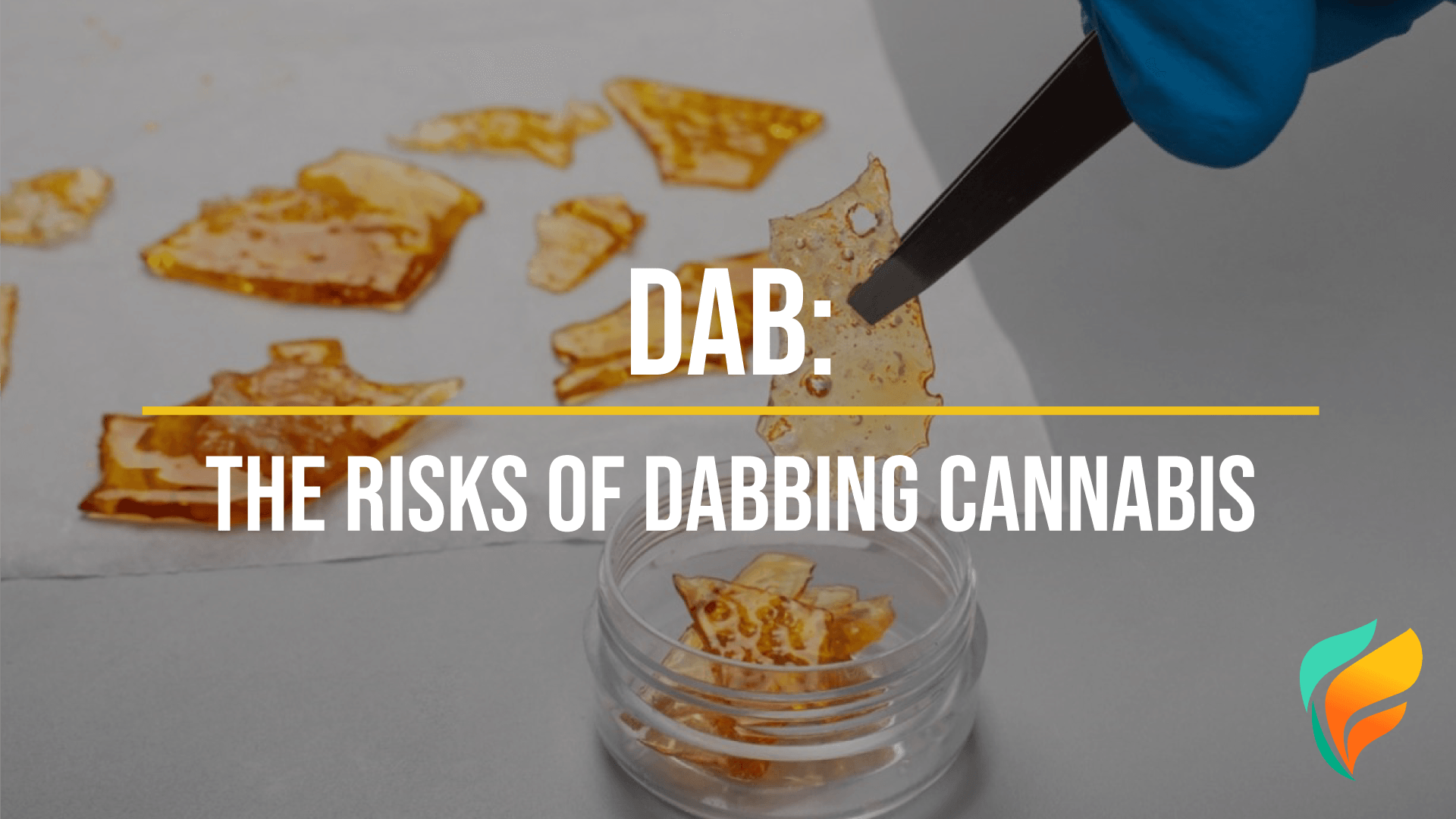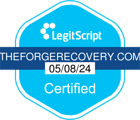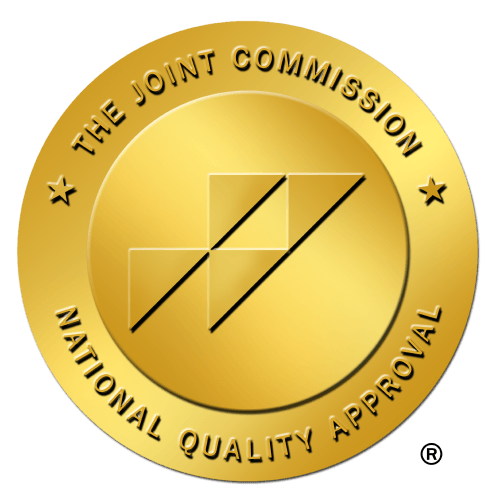Dab: What Is a Dab, What Is Dabbing, and More About Cannabis Concentrates


What is a dab? Our blog explores dabbing, cannabis concentrates, and why using this strong form of weed can be addictive and dangerous.
In today's world, there is a growing concern over people's increasing reliance on external factors to maintain a sense of normalcy or happiness. Substance abuse, in particular, has become a rapidly growing issue.
Many individuals are using drugs like cannabis concentrate (often known as a dab) as a stress reliever, unaware that they are essentially causing harm to their own lives. Dependence on any substance is highly dangerous as tolerance builds up, putting individuals at even greater risk.
Moreover, these substances can linger in the body for longer than anticipated, causing potential damage. Therefore, it is crucial for individuals to recognize the dangers of relying on drugs and seek healthier alternatives for achieving happiness and well-being.
What Is a Dab?
Dab, also called cannabis concentrate or butane hash oil (BHO), has experienced a remarkable surge in popularity as a potent cannabis extract. The production of a cannabis dab involves the extraction of cannabinoids, such as THC and CBD, from the cannabis plant using solvents like butane. This meticulous process yields a concentrated and adhesive substance that exhibits a range of colors from amber to gold.
The widespread appeal of dab cannabis can be attributed to its exceptionally high potency, as it contains significantly elevated levels of cannabinoids compared to traditional cannabis flowers. Consequently, it has become highly sought-after by individuals desiring a more potent and immediate cannabis experience.
Dabs are commonly consumed through vaporization using specialized equipment like a dab rig or dab pen.
The versatility of dab concentrates is exemplified by their availability in various forms, including shatter, wax, budder, and live resin, allowing users to select textures and consistencies that align with their specific preferences. However, it is of utmost importance to exercise caution when dabbing, particularly due to its higher potency, which may result in someone getting higher than they expected to be. Higher doses of cannabis can be very unpleasant for some.
Dab: How Do People Use Dabs?
Dabs are highly potent cannabis concentrates and are taken in many different ways.
Let's examine several common approaches to consuming dab, including dab rigs, vaporizers, and vape pens:
Dab Rigs
Dab rigs, also known as oil or concentrate rigs, are specialized glass water pipes designed for dabbing. These rigs typically consist of a water chamber, a heating element (nail or banger), and a mouthpiece. To use a dab rig, the heated nail or banger is exposed to a small amount of dab concentrate, which instantly vaporizes upon contact, creating inhalable vapor.
The vapor is then drawn through the rig and inhaled by the user.
Vaporizers
Vaporizers, specifically designed for concentrates, offer a more portable and convenient option for dab consumption. These devices heat the dab concentrate at lower temperatures than dab rigs, resulting in vaporization rather than combustion.
Vaporizers come in various forms, including handheld devices, tabletop units, and vape pens. They often utilize heating elements, such as coils or ceramic chambers, to heat the concentrate and produce vapor.
Vape Pens
Vape pens, also known as dab pens, are compact and portable devices designed specifically for dabbing on the go. These pens typically contain a battery, a heating element (coil or ceramic chamber), and a mouthpiece. Dab concentrate is loaded into the chamber, and upon activation, the heating element vaporizes the concentrate, allowing users to inhale the vapor.
Are You Struggling with Mental Health or Addiction?
We Can Help. Call Us Now!
CALL: 877-839-1772
How Long Does a Dab Stay in Your System?
The duration that a dab, or cannabis concentrate, stays in your system can vary depending on several factors, including individual metabolism, frequency of use, dosage, and the specific potency of the concentrate.
While there is no definitive answer, we can provide a general overview of the typical timeframe. Drug tests are commonly used when it comes to detecting the presence of dab in your system. These tests primarily analyze urine, blood, saliva, and hair samples. It's worth noting that cannabinoids, including THC, the psychoactive component of cannabis, can be detected in these samples even after the effects of dab have worn off.
Urine Tests
Dab can be detected in urine for 3 to 30 days, depending on factors such as individual metabolism and frequency of use. Regular dab users may have a longer detection window compared to occasional users.
Blood Tests
Dab can typically be detected in blood for up to 1 to 2 days after use, as THC levels decrease relatively quickly in the bloodstream, especially with infrequent use.
Saliva Test / Mouth Swab Test
Saliva testing yields similar detection times as blood, generally up to 1 to 2 days. However, there may be slight variations based on test sensitivity.
Hair Tests
Hair testing provides the longest detection window, potentially detecting dabs in hair samples for several months to years after use. Hair tests, although less commonly used, are primarily utilized to detect long-term drug use.
It is crucial to recognize that individual factors play a significant role in the duration of detectability of dab in the system, and the provided timeframes serve as general guidelines.
More About Dab Drug Tests
The choice of drug testing method depends on several factors, including the testing purpose, the desired detection window, and the resources available. Accuracy is crucial to ensuring reliable results and making informed decisions. It's important to note that while drug testing serves various purposes, including employment screening and monitoring substance abuse, it should always be conducted ethically and with respect for individual privacy.
In conclusion, drug testing is employed to identify the presence of dabs in the body. The most commonly used methods include urine, blood, saliva, and hair tests. Each testing method has a unique detection window, sensitivity, and limitations.
Therefore, understanding the specific testing requirements and regulations relevant to your circumstances is crucial. Being knowledgeable about these factors will help ensure accurate and reliable test results.
Are You Struggling with Mental Health or Addiction?
We Can Help. Call Us Now!
CALL: 877-839-1772
What Is the Half-Life of a Dab?
Drug half-life is a fundamental term that describes the time required for half of a drug's concentration to be eliminated from the body. It plays a significant role in comprehending the duration and impact of a drug. In the context of the dab, the half-life pertains to the duration necessary for half of the cannabinoids found in the concentrate to be metabolized and eliminated.
The half-life of a dab can differ based on factors like specific cannabinoids, individual metabolism, dosage, and frequency of use. By grasping the concept of half-life, one can gain valuable insights into the duration of dab's effects and determine the appropriate frequency of consumption to achieve desired outcomes.
However, it's important to note that different cannabinoids have different elimination rates, and the half-life can range from a few hours to several days. To get a more accurate estimate of the half-life of the dab, consult with a healthcare professional or a specialist in toxicology.
How Long Does It Take a Dab to Have Effect?
Dab, a highly potent cannabis concentrate, delivers a rapid onset of effects typically felt within seconds to minutes after inhalation or vaporization. This quick-acting impact is attributed to the concentrated cannabinoids, especially THC, found in dab.
As a result, users experience potent psychoactive effects, including euphoria, relaxation, heightened sensory perception, and increased appetite. However, a dab user might also experience intense anxiety, nausea, and even hallucinations.
The duration of these effects can vary based on dosage, tolerance, metabolism, and the concentrate's potency, typically lasting between one to three hours.
Are You Struggling with Mental Health or Addiction?
We Can Help. Call Us Now!
CALL: 877-839-1772
What Are Some Dab Side Effects?
Dab has gained popularity in recent years. While it offers potent effects and a unique experience, it's important to understand and consider the potential health risks associated with its use. Here, we will explore the potential short-term and long-term effects on physical and mental health.
Dab Short-Term Effects
Dab use can result in several short-term effects that individuals should be aware of. For example, inhalation of dab vapor at high temperatures can cause respiratory issues such as coughing, throat irritation, and bronchial spasms. It can also impair coordination, motor skills, and judgment, increasing the risk of accidents or injuries.
In addition, the high THC levels in dab concentrates can induce intense psychoactive effects, including anxiety, paranoia, panic attacks, and cognitive impairment.
Additionally, dabbing may elevate heart rate and blood pressure, which can be particularly concerning for individuals with pre-existing cardiovascular conditions. Therefore, exercising caution and understanding these short-term effects is essential to ensure safe dabbing practices.
Dab Long-Term Effects
Long-term dab use can give rise to various health effects that individuals should be mindful of.
First, regular and heavy dab use carries the potential for cannabis use disorder or addiction, characterized by a loss of control over consumption and withdrawal symptoms upon cessation. Second, prolonged dabbing can negatively impact respiratory health, contributing to bronchitis, chronic cough, and other respiratory issues.
Finally, prolonged and heavy dab use may adversely affect cognitive function, memory, attention, and IQ development, mainly if initiated during adolescence.
Dab: Is Dabbing Dangerous in the Long Run?
Long-term dab use has also been associated with an increased risk of mental health problems, including anxiety disorders, depression, and psychosis, especially in individuals predisposed to these conditions. Therefore, awareness of these potential long-term effects is crucial, highlighting the importance of responsible dabbing practices and informed decision-making.
Individual responses to dab use may vary, and the risks mentioned are not exhaustive. Dab use carries potential short-term and long-term risks, including respiratory issues, impaired coordination, intense psychoactive effects, increased heart rate, addiction potential, respiratory health concerns, cognitive effects, and mental health risks.
Understanding these risks and making informed choices can help prioritize well-being.
Are You Struggling with Mental Health or Addiction?
We Can Help. Call Us Now!
CALL: 877-839-1772
Treatment and Recovery for Dab Addiction
For individuals experiencing dab addiction or dependency, seeking appropriate treatment is essential for recovery and overall well-being. Several treatment approaches and resources are available to support individuals in overcoming their addiction and regaining control over their lives:
Behavioral Therapy
Behavioral therapy, such as cognitive-behavioral therapy (CBT), can effectively address the psychological aspects of dab addiction. It helps individuals identify and modify negative thought patterns, develop coping skills, and establish healthier behaviors and routines.
Support Groups
Support groups, like Narcotics Anonymous (NA) or Marijuana Anonymous (MA), provide a supportive and understanding community of individuals facing similar challenges. These groups offer a platform for sharing experiences, receiving guidance, and finding encouragement in the recovery journey.
Counseling and Individual Therapy
Individual therapy sessions with a trained therapist or addiction counselor can provide personalized support in addressing the underlying causes of addiction, developing relapse prevention strategies, and promoting overall mental health and well-being.
Inpatient or Outpatient Rehabilitation Programs
For individuals with more severe or complex addiction issues, inpatient or outpatient rehabilitation programs may be recommended. These programs offer a structured environment with comprehensive treatment plans, including therapy, counseling, group support, and medical supervision if needed.
Dual Diagnosis Treatment
For individuals with co-occurring mental health disorders, such as anxiety or depression, dual diagnosis treatment programs address both the addiction and the underlying mental health condition simultaneously, ensuring comprehensive and integrated care.
Professional Medical Support
In some cases, individuals may benefit from medications or medical interventions to manage withdrawal symptoms or address underlying mental health conditions. Consulting with a healthcare professional or addiction specialist can guide the appropriate medical support options.
Additionally, community-based resources, helplines, and online platforms can offer information, guidance, and connections to local support services. It's crucial for individuals seeking help to reach out to these resources and find the support network that best suits their needs.
Remember, every individual's journey to recovery is unique, and treatment approaches may vary based on personal circumstances. However, seeking professional guidance and support can provide the necessary tools and resources to overcome dab addiction or dependency and lead a healthier, more fulfilling life.
Don’t Let a Dab Take Over Your Life. Get Help for Cannabis Addiction Today at The Forge Recovery Center
Suppose you are struggling with dab addiction…or any form of addiction. In that case, it is crucial to seek professional assistance to break free from its hold.
The Forge Recovery Center uses effective, proven, and evidence-based ways to treat addiction. Our welcoming, serene treatment center is the ideal place to explore the roots of addiction and treat it successfully. With us, you’ll be able to build a successful, happy life without cannabis addiction.
The life you truly deserve is possible. If you’d like to learn more about how The Forge Recovery Center can help you leave dabs behind, talk to us today.
Are You Struggling with Mental Health or Addiction?
We Can Help. Call Us Now!
CALL: 877-839-1772




